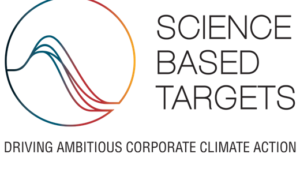The global HVAC sector is becoming greener and Smarter. It is undergoing a transformational shift driven by the convergence of IoT, cloud computing, artificial intelligence (AI), and sustainability initiatives. These trends redefine how HVAC systems are managed and secured across residential, commercial, and industrial environments.
The HVAC sector is changing fast. Smart and connected systems are helping buildings save energy, run more smoothly, and stay comfortable. With techs like AI, IoT, and cloud computing, companies can now monitor systems in real-time and fix problems. The sector highlights the growing role of connected HVAC solutions in enhancing operational efficiency, reducing energy consumption, and ensuring long-term sustainability. The widespread adoption of IoT sensors and cloud-based platforms enables real-time monitoring, predictive analytics, and proactive maintenance, minimising downtime while maximising performance.
At the same time, the rise of AI and machine learning (ML) is unlocking powerful data-driven insights, helping to optimise system operations, extend equipment lifespan, and tailor climate control to occupant needs. These technologies also support smarter retrofitting decisions and improved design planning in both new and existing buildings, reports Frost & Sullivan’s latest analysis.
Cybersecurity for Smart HVAC
With HVAC systems increasingly integrated into building automation and enterprise IT networks, cybersecurity is taking centre stage. Smart HVAC represents a growing target segment for the cybersecurity industry, prompting a push toward robust, end-to-end solutions.
Dennis Marcell Victor, Growth Expert at Frost & Sullivan, says, “Securing connected systems requires identifying unauthorized devices, monitoring abnormal behaviour, encrypting sensitive data, and implementing strict access controls. Adopting a zero-trust framework with continuous monitoring and network segmentation will be essential to ensure resilience.” AI and ML will be pivotal in detecting threats in real-time. However, integrated cybersecurity solutions – including ransomware prevention and device authentication – are expected to become standard in next-generation HVAC deployments.
Energy-efficiency
Environmental regulations and global sustainability goals drive HVAC manufacturers to adopt low-GWP refrigerants and design systems optimized for energy efficiency. Meanwhile, the booming demand for precision cooling in data centres – fuelled by cloud computing and edge technologies – is encouraging innovation in scalable, high-performance HVAC systems. In addition, the emergence of HVAC-as-a-Service (HVACaaS) is transforming how customers engage with HVAC providers. Offering flexible, subscription-based models, HVACaaS reduces capital expenditures while delivering guaranteed performance, proactive service, and enhanced customer satisfaction.
Enabling smarter buildings
Open communication protocols like BACnet/IP and Modbus are gaining traction to ensure seamless integration between HVAC systems and broader building management infrastructure. This trend supports vendor-agnostic environments and promotes flexibility in system upgrades and expansions.
The companies which embrace digital transformation, prioritise cybersecurity and align with sustainable practices will be best positioned to lead in the era of smart buildings and connected ecosystems.
Cookie Consent
We use cookies to personalize your experience. By continuing to visit this website you agree to our Terms & Conditions, Privacy Policy and Cookie Policy.

















